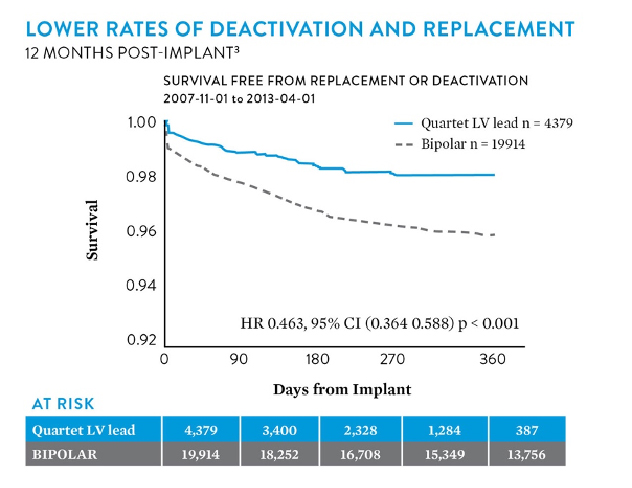Cardiac resynchronization therapy (CRT) is an effective treatment for heart failure, and it can help your patients avoid life-threatening changes in heart rhythm. CRT can also alleviate many of the symptoms experienced by your patients, improving their overall quality of life.
Quadripolar technology offers a significant advantage over bipolar technology—giving you the flexibility you need to access pacing sites and vectors outside of the reach of most devices, without compromising lead stability or performance.
When used in conjunction with our innovative suite of quadripolar technology-enabled CRT solutions, the Quartet™ LV lead supports improved patient outcomes.
Cost analysis performed on a single-center registry showed the Quartet quadripolar LV lead was associated with significantly reduced hospitalizations, specific to heart failure (HF) and left ventricular (LV) lead surgical revision.5
The use of quadripolar technology offers you and your hospital or clinic many clinical, economic and operational advantages over bipolar technology, including:
In clinical studies, quadripolar pacing technology has resulted in:

Patients with a quadripolar system may receive more effective CRT than those with bipolar LV pacing:4
Mortality incidence was significantly lower in the quadripolar group.10
After multivariate adjustment, the quadripolar lead was associated with a lower risk of death HR: 0.77; 95% CI: 0.69 to 0.86; p < 0.001.10
CRT with quadripolar LV system was associated with a 22% relative reduction in mortality compared with a bipolar LV system.10
MAT-2012188 v1.0
STAY CONNECTED